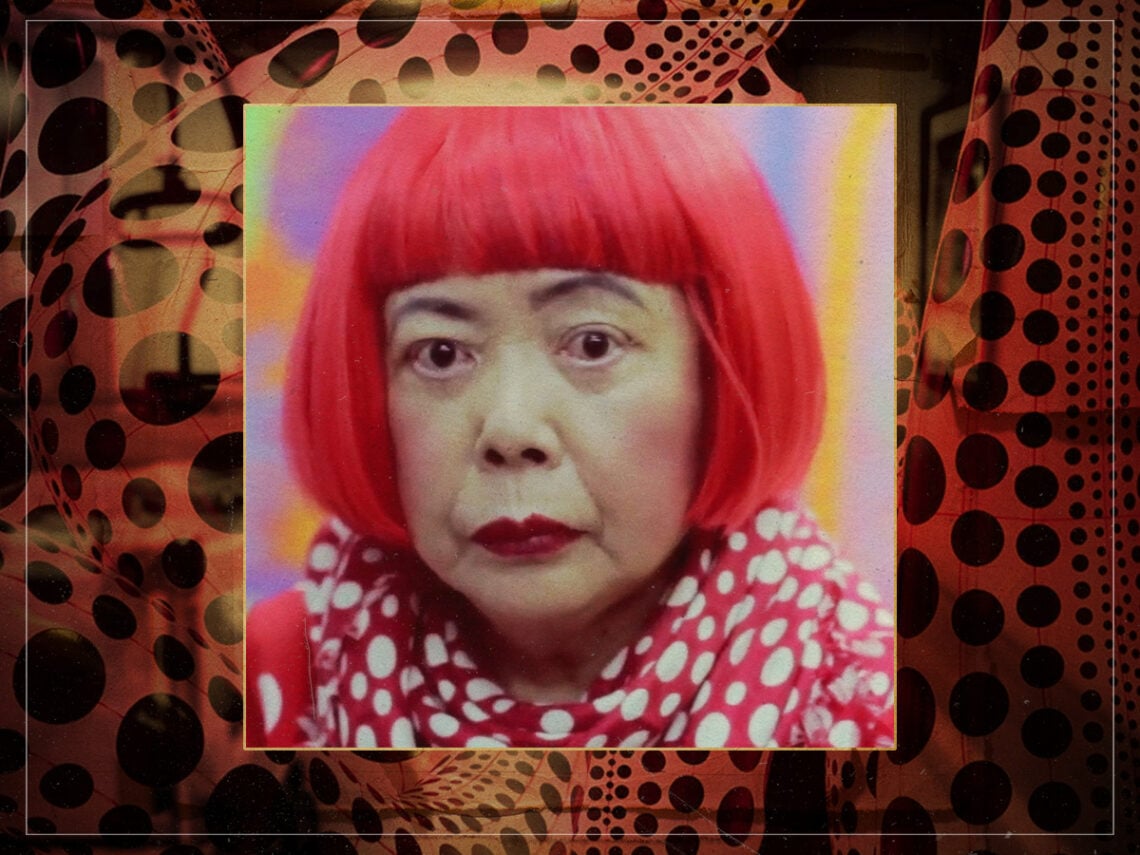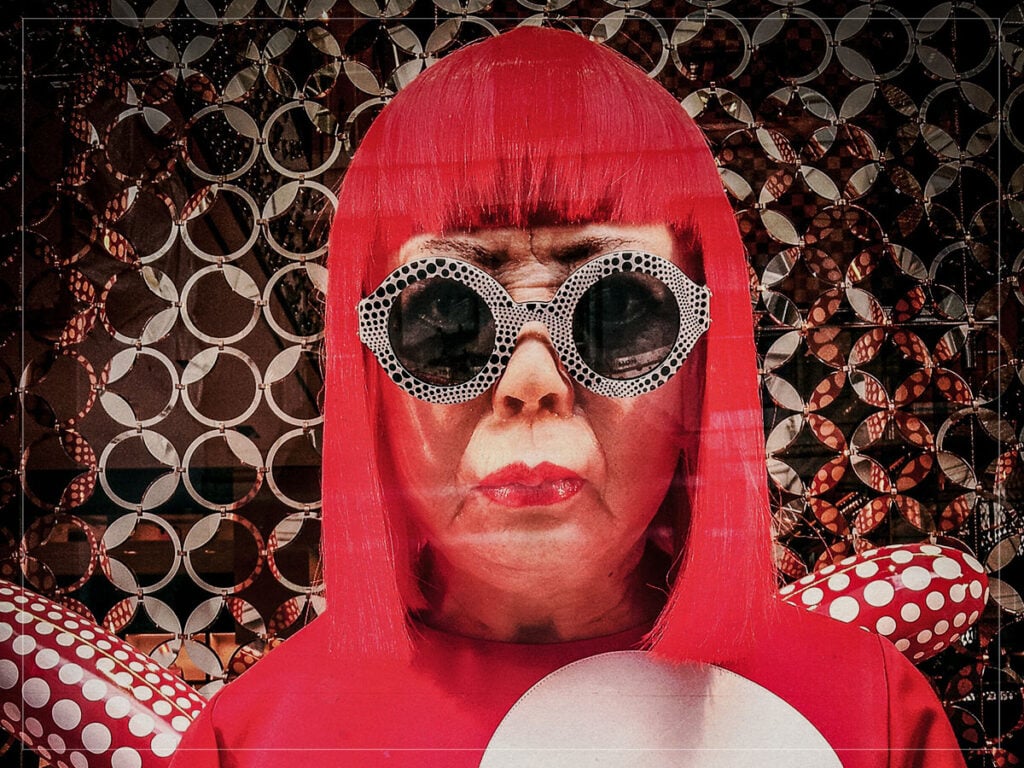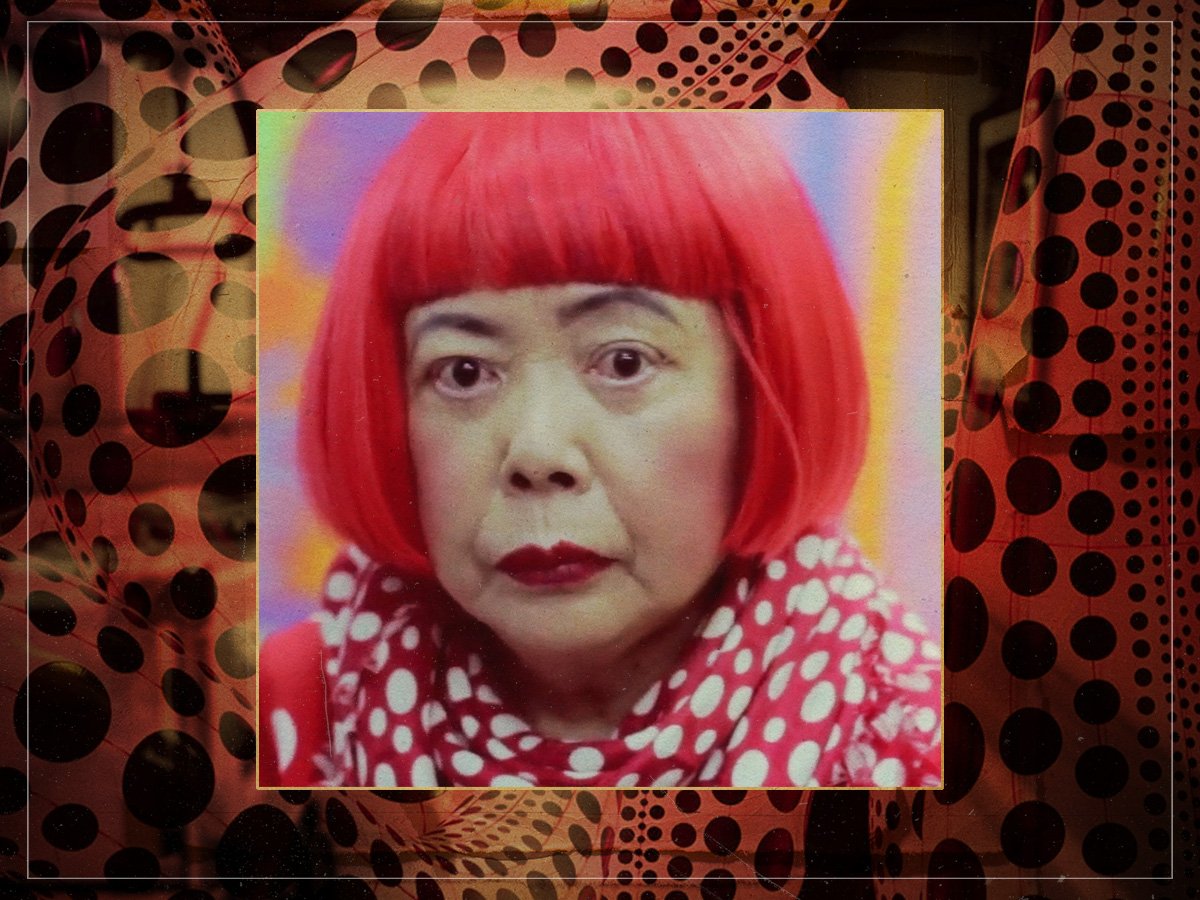
(Credits: Far Out / YouTube Still / David Levene)
Mon 28 April 2025 22:30, UK
Artist Yayoi Kusama is one of the highest paid living artists in history, loved by many for her nonsensical and otherworldly bursts of colour across multiple mediums.
Her London Tate Modern show sold out in just minutes, twice consecutively. She is celebrated by the young and old alike for her catchy works, but there’s a heavy and dark story behind her seemingly eccentric artworks, which look like you’ve stepped into the mind of someone on the craziest acid trip of their life.
Kusama, now in her 90s, has struggled with severe mental health problems since she was a child, and making art was the only thing that kept her alive. It became a form of escapism when she was experiencing hallucinations, which began as early as seven years old. “My artwork is an expression of my life, particularly of my mental disease,” she once said.
When she was a child, Kusama began to have vivid hallucinations of flashing lights, waves of dots engulfing her and strange pumpkin-like shapes that would approach her. She called these hallucinations, which evolved into states of intense panic, moments of ‘self-obliteration’. In order to make sense of these, she would draw out what she saw. These motifs became the primary subjects of the art we know of her today.
Her simple notebook sketches evolved into much larger projects in the 1950s, when Kusama began to cover the walls, floors and household objects with these motifs, bringing to the exterior her interior agony.
 (Credits: Far Out / Garry Knight)
(Credits: Far Out / Garry Knight)
In this way, her art and mental state have continued to be intrinsically interlinked, as she has explored the transitory state of these hallucinations in her work and shared them with others who might be able to relate or who are curious to step into her mind. “By translating hallucinations and fear of hallucinations into paintings, I have been trying to cure my disease,” she described.
Travelling and working across Japan and America, Kusama reached a point at the peak of her fame where she felt she could no longer live alone or within the general public because her mental state was so bad. So, in 1973, she checked herself into Seiwa Hospital in Tokyo, where she’s been ever since.
In the early years of her hospital stay, Kusama began experimenting with a new medium of collage. These became an Alice in Wonderland, an inside look into how her mind operated and her longing to be free of schizophrenia.
One of the most famous examples of this is called Soul Going Back to Its Home, which is also dedicated to fellow artist, dear friend and non-sexual lover, Joseph Cornell. This collage is deeply surreal in style, dreamlike and nightmarish all at once. There are different shapes that look like animals and then evolve into others: butterflies, birds and owls, which overlap each other around the frame of the collage. Then you zoom into the middle image, which is a dramatically coloured sunset with birds rushing into the sky. There’s a liberating feeling in these as they migrate or travel elsewhere, which greatly contrasts with the mysterious creatures around them. Many have interpreted these as an allegory of Kusama’s mind that is haunted by strange beings, as she attempts to free herself of them.
The personal reference to her relationship with Cornell has been translated in this work as a memento mori dedicated to him. Cornell was Kusama’s main benefactor when she lived in New York in the ’60s, and she often modelled for the much older artist.
 (Credits: Far Out / Yayoi Kusama / David Levene / Manchester International Festival)
(Credits: Far Out / Yayoi Kusama / David Levene / Manchester International Festival)
“I believe it was love at first sight for Cornell when he first saw me,” Kusama recalled in her autobiography. “I disliked sex, and he was impotent; we suited each other very well”.
Infinity Net is another series of paintings that vary in colour and shape, but all use the same flat yet multidimensional pattern of holes or squares on the canvas. The repeated process of painting this might reflect Kusama’s never-ending experience with her mental struggles. In fact, she intended for these paintings to provoke “a kind of dizzy, empty, hypnotic feeling” as there’s no beginning, middle, or end to them.
Kusama hasn’t left the hospital since she checked herself in and she bought an art studio not far from it, living between the two locations. There seems to be a sense of comfort for her in staying at the institution despite her fame and wealth.
Upon looking at these works, I was reminded of artists of the Art Brut genre, a style characterised by artists who mainly struggle with mental disorders and, like Kusama, create art without intending for it to be viewed as so, to escape their internal turmoil.
Many artists of Art Brut operate within psychological and physical isolation, typically because they are in mental institutions, exploring a variety of media available to them, which is often limited.
Kusama’s work reminds me of French artist Jill Galieni, who is best known for her repeated prayer writing to Saint Rita during her hallucinations. Her repeated written words turn increasingly into nonsensical shapes that overlap and continue outside of the confines of the paper. Like Kusama, Galieni tries to free herself from the constraints of convention, forming patterns rather than words.
Artists who explore their mental state often seem to be displaying pictures without rhyme or reason at face value, but once examined more carefully and with context, they can reveal multiple layers of emotions, many of which involve an immense amount of pain. So art becomes both a way for us to connect and understand them and a positive method to escape their troubles.
Related Topics
Subscribe To The Far Out Newsletter
